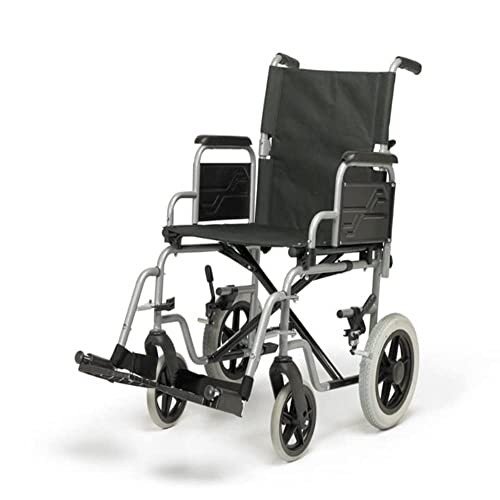How To Tell If You're In The Right Place To Go After Buying A Mobility Scooter
Buying a Mobility Scooter: A Comprehensive Guide
Mobility scooters have actually ended up being increasingly popular as a method of transport for people who might have trouble walking due to age, disability, or other health conditions. Stephane Hickernell are developed to offer self-reliance and ease of travel, whether for outside experiences or indoor navigation. However, with a variety of alternatives available, selecting the ideal mobility scooter can be frustrating. This article aims to offer a useful guide on buying a mobility scooter, together with FAQs to assist in the decision-making procedure.
Understanding Mobility Scooters
Mobility scooters are electric-powered cars that are developed to help individuals with mobility obstacles. They differ in style, size, and performance to accommodate different needs. Generally, mobility scooters come with three or four wheels, a seat for the user, handlebars for steering, and are designed to navigate both indoor and outside areas.
Types of Mobility Scooters
There are usually 3 kinds of mobility scooters, each accommodating specific needs:
Portable/Travel Scooters:
- Lightweight and collapsible for easy transportation.
- Best for brief ranges and travel.
- Limited weight capability and range.
Mid-sized Scooters:
- Offers a balance between portability and efficiency.
- Ideal for daily outdoor usage.
- Adequate weight capacity and range.
Heavy-duty Scooters:
- Designed for rougher surfaces and much heavier individuals.
- Typically have higher weight capacities and longer battery life.
- Features larger wheels and might consist of sophisticated suspension systems.
Type
Functions
Best For
Portable/Travel
Lightweight, collapsible
Short distances, travel
Mid-sized
Balance of portability and efficiency
Everyday outside usage
Durable
Greater weight capability, rugged design
Rough surfaces, heavier individuals
Key Considerations When Buying a Mobility Scooter
When selecting a mobility scooter, a number of aspects must be thought about to make sure the best suitable for individual requirements. Below is a list of important considerations:
Weight Capacity:
- Ensure the scooter can support the user's weight easily to avoid damage and ensure safety.
Variety:
- Consider how far you will be taking a trip on a single charge. Battery variety can vary from around 10 to over 35 miles.
Size:
- Assess the measurements to identify whether the scooter can fit through entrances and into lorries.
Surface:
- Evaluate where the scooter will mainly be used (pavement, yard, rough surface) and select a model developed for those conditions.
Storage Space:
- If the scooter requires to be kept in a small area, size might be a vital aspect.
Features and Accessories:
- Look for necessary features like adjustable seats, armrests, storage baskets, and lights.
Expense:
- Mobility scooters can range anywhere from a few hundred to several thousand dollars. Evaluate your spending plan and consider funding choices if needed.
Where to Buy a Mobility Scooter
Mobility scooters can be acquired from numerous sources, each providing different advantages. Below is a list of common purchasing choices:
Medical Supply Stores:
- These stores frequently provide skilled guidance and the opportunity to try different models.
Online Retailers:
- Websites like Amazon and specialized medical devices websites provide a vast array of alternatives, however purchasers need to ensure they have a return policy in case the item is not suitable.
Direct from Manufacturers:
- Buying straight allows clients to tailor their scooters, although this may take additional time.
Utilized Equipment Stores:
- Purchasing an utilized scooter can conserve money, but it's necessary to completely examine the scooter's condition and battery life.
FAQs About Buying a Mobility Scooter
Q: How do I understand which size scooter is right for me?
A: The best size depends on your physical dimensions and where you prepare to utilize the scooter. Check the specifications against your measurements and think about factors like weight and comfort.
Q: Are mobility scooters covered by insurance coverage?
A: Coverage depends on your insurance coverage strategy. Medicare may cover scooters under certain medical conditions. It's suggested to contact your provider beforehand.
Q: How fast can a mobility scooter go?
A: Most mobility scooters have an optimal speed of around 4 to 8 miles per hour, depending upon the model and policies in your area.
Q: What maintenance is needed for mobility scooters?
A: Regular upkeep includes inspecting tire pressure, keeping the battery charged, making sure connections are tidy, and examining mechanical parts for wear and tear.
Q: Can I take my mobility scooter on public transport?
A: Many public transport systems accommodate mobility scooters, but you should examine the specific guidelines of your local transit authority.
Buying a mobility scooter can greatly improve the quality of life for individuals with mobility obstacles by providing independence and ease of movement. By comprehending the types available and considering essential elements such as weight capacity, variety, and designated use, potential buyers can make informed decisions. With proper research and consideration, one can find the ideal mobility scooter to best suit their needs, enabling them to navigate the world around them with self-confidence.
